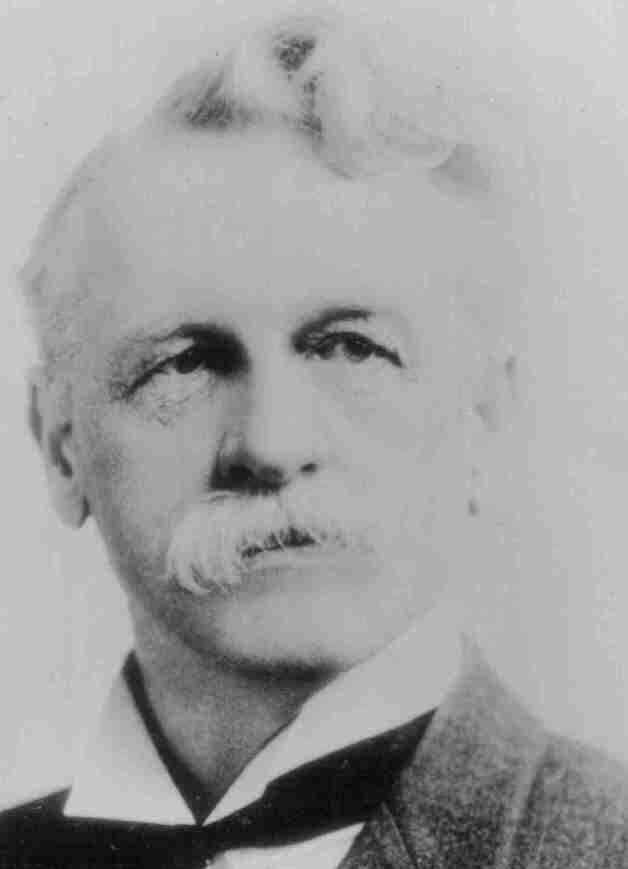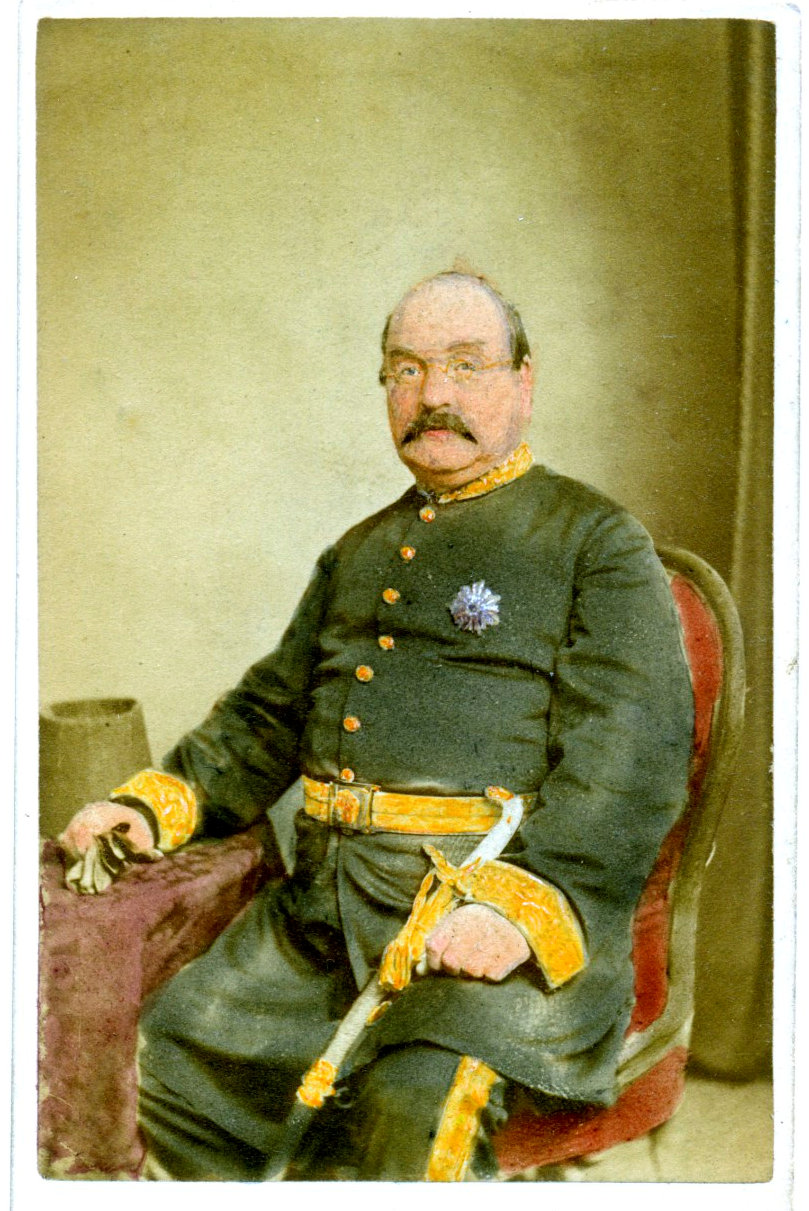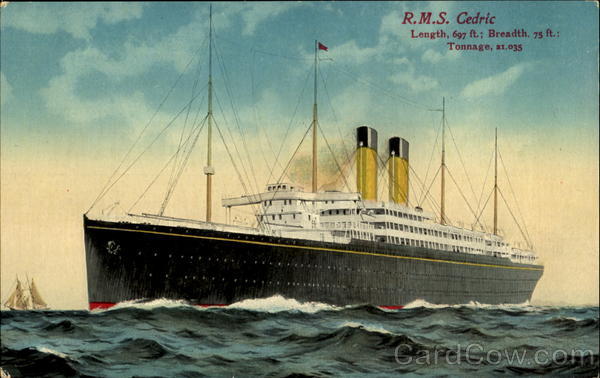THE FIRST IRISH BAHÁ’ÍS
 Photograph: Bahà’í World Centre |
Frederick D'Evelyn Frederick W. D'Evelyn appears to have been the first person of Irish birth to accept the Bahá'í Faith. He was born in Belfast in or about 1855. Information about his early life is scanty but it is known that he qualified in medicine at the University of Edinburgh, Scotland, and subsequently served in a medical capacity with the British army in the South African campaigns, being wounded in 1887. He emigrated to the United States and settled in San Francisco, where his career blossomed. He held a faculty position at the University of California and was president of the California Academy of Sciences. He was also active in civic matters and served as president of the Geographical Society of California and of the Audubon Society of the Pacific Coast. In 1901 D'Evelyn became a Bahá'í, and he served the Faith for the rest of his life. He was in the party (along with Helen Goodall, Ella Goodall Cooper, and Mr and Mrs W. C. Ralston) that officially welcomed 'Abdu’l-Bahá on His arrival in San Francisco in October 1912, and his name appears first of the list of recipients of a tablet from the Master published in Star of the West on 19 January 1915. Dr D'Evelyn's account of the historic meeting is reproduced in Marion Carpenter Yazdi's Youth in the Vanguard which describes his involvement in Bahá'í activities a number of times. His service is mentioned in other books, such as Mahmud's Diary and Leroy Ioas - Hand of the Cause of God by Anita Ioas Chapman, and he appears a number of times in Star of the West, sometimes referred to as "Frederick W. Evelyn". In addition to his local position he was a member of the Temple Unity Board, the forerunner of the National Spiritual Assembly. In August 1932 he died after a brief illness and was interred at Cypress Lawn cemetery. The Spiritual Assembly of the Bahá'ís of San Francisco expressed its "grief and sense of serious loss" and paid tribute to "the untiring services and inspiring leadership of their first Chairman, Dr Frederick W. D'Evelyn".
|
Lady Blomfield and the Culvers
The first person of Irish birth to accept the Faith in the British Isles appears to have been Sara, Lady Blomfield (nee Ryan) in London in 1907. She had been born in County Tipperary, Ireland, in 1859. From the Bahá'í standpoint she is notable as an outstanding early member of the community in England who having acted as hostess to ''Abdu’l-Bahá in London in 1911 and 1913, and as compiler of The Chosen Highway.
Peter Coyne, another Irish emigrant to the United States, became a Bahá'í in Nevada, Missouri, in November 1907.
The earliest Bahá'í living in Ireland of whom we have detailed knowledge are the Culver family. Henry Culver was the U.S. consul in Queenstown (now Cobh) from 1906 to 1910. He and his wife were Bahá'ís, but appear to have treated their faith as a private matter, perhaps because of Henry's official position.
The first native Bahá'ís in Ireland appear to have been Joan Waring Fforde and Thomas Fforde - see next section.
The first native Believers?
Frances Joan Alice Waring 1883 - 1950 and Thomas Roderick Fforde 1882 - 1949: Basic facts and some conjecture
Joan's family were the Warings of Waringstown House, Lurgan, County Armagh. Joan had two older brothers - Holt and Ruric Henry. Both brothers were killed in the First World War. She had two sisters - Esther Marian and Mary Theresa. (Mary married Samuel Barbour Combe of Donacloney House. He was also killed in the war.)1 Thomas's family were the Ffordes of Raughlan, Co Armagh. (Originally from Seaforde, Co Down).1 Thomas was the fourth of six brothers: Francis Creswell, Robert James, Arthur William Ronald, Thomas Roderick, Charles Holt, and Eric Harold He had three sisters: Aimée Mary Martha, Eveleen Annie Archer, and Mabel Kathleen.
The first association with Bahá'ís which we are aware of, was a receipt issued on 5 December 1913, recording a donation of $24.35 for the Wilmette Temple Fund from Miss J. Waring.2 Obviously Joan would have been in contact with Bahá'ís for a significant period before making this donation but we have not yet found any record of her activities during this period. We know that she was in contact with American Bahå’ís for at least the subsequent decade.
During 'Abdu’l-Bahá's visit to London, Mirza Ahmad Sohrab kept a diary of His activities. In his diary, on 17 December 1912, Sohrab records: "In Belfast, Ireland lives a fine Bahá'í a splendid believer. She travelled all day and night to see the Master. He welcomed her most cordially and said: 'You must become the cause of the illumination of Ireland… you must ignite four thousand lamps in one year…'".3 We have not yet found any direct evidence to link this reference to Joan Waring but it seems highly likely.
Joan married Thomas on 26 October 1914. On 29 June 1919 they wrote to 'Abdu’l-Bahá. She states that she "had a word" from 'Abdu’l-Bahá when He was last in London, that she has since married, and that she received news of A'Abdu’l-Bahá¡'s safety from Major Tudor Pole.4 This letter appears to confirm the suggestion that Joan may have met 'Abdu’l-Bahá¡ while He was in London. The letter was signed by both Joan and Thomas and the original is in the Bahá'í World Centre holdings. 'Abdu’l-Bahá answered her letter on 20 January 1920, but to date no copy of the reply has been found.
Joan and Thomas moved to Donegal and it was from there that they made contact with George Townshend. Townshend wrote to Shoghi Effendi, in 1925: "We have seven Irish Bahá'ís - the two Ffordes, my wife, my sister, my two children (aged four and five) and myself!"2
A more objective assessment of the situation appears in a letter from John Esslemont to Albert Vail in 1924. He noted that Townshend "seems to be a convinced Bahá'í and added "I only know of two other Bahá'ís in Ireland, a Mr and Mrs Fforde."2 Townshend also wrote to Esslemont: "I met the Ffordes in the spring of 1921. Except for them nobody in this island is known to be interested in Bahaism."
The Ffordes are "possibly the earliest Irish Bahá'ís to have a public Bahá'í identity in Ireland".2
References:
- The Landed Gentry of Ireland
- Armstrong-Ingram, Jackson. "Early Irish Bahá’ís" in Associate, Issue 25, Spring 1998
- Star of the West, Vol. III, No. 19, 2 March 1913
- Universal House of Justice, Haifa, in a letter to Edwin Graham, 24 August 1998.
 |
A note on Dr William CormickIn his biography The Báb (publisher George Ronald, 1973) the late H. M. Balyuzi refers to a Dr Cormick who attended the Báb during His imprisonment in Tabriz, and reproduces the doctor's account. of their meetings. Shoghi Effendi says in Unfolding Destiny that "He is apparently the only Westerner who has met the Bab and recorded his impressions..." Although described in more than one account as "an English physician" Dr William Cormick was born in Tabriz in 1820, the son of Dr John Cormick, of County Tipperary, Ireland, and his Armenian Christian wife. He was sent to Britain to study (where he gained initial medical qualifications from University College, London, and an MD from St. Andrews) and returned to Persia in 1844. He served as personal physician to Nasiru'd Din Mirza, and when the latter became Shah he accompanied him to Tihran. However he was replaced for political reasons and returned to practise medicine in Tabriz. He passed away in London in 1877 and is buried in Kensal Green cemetery. Dr Cormick gives Ireland a unique connection with the new Faith. |
And a material connection...
The liners RMS Cedric and RMS Celtic, on which ’A'bdu’l-Bahá made His Atlantic crossings, were built at the Harland and Wolff shipyard on Queen's Island, Belfast. A subsequent construction, the Titanic, went on to gain fame under different circumstances. The Harland and Wolff works is still operating from the Queen's Island site.

The section "The first native Believers" was
written by Edwin Graham and that on Dr William Cormick based on an account by
Moojan Momen.
Other sections by Iain Palin.
